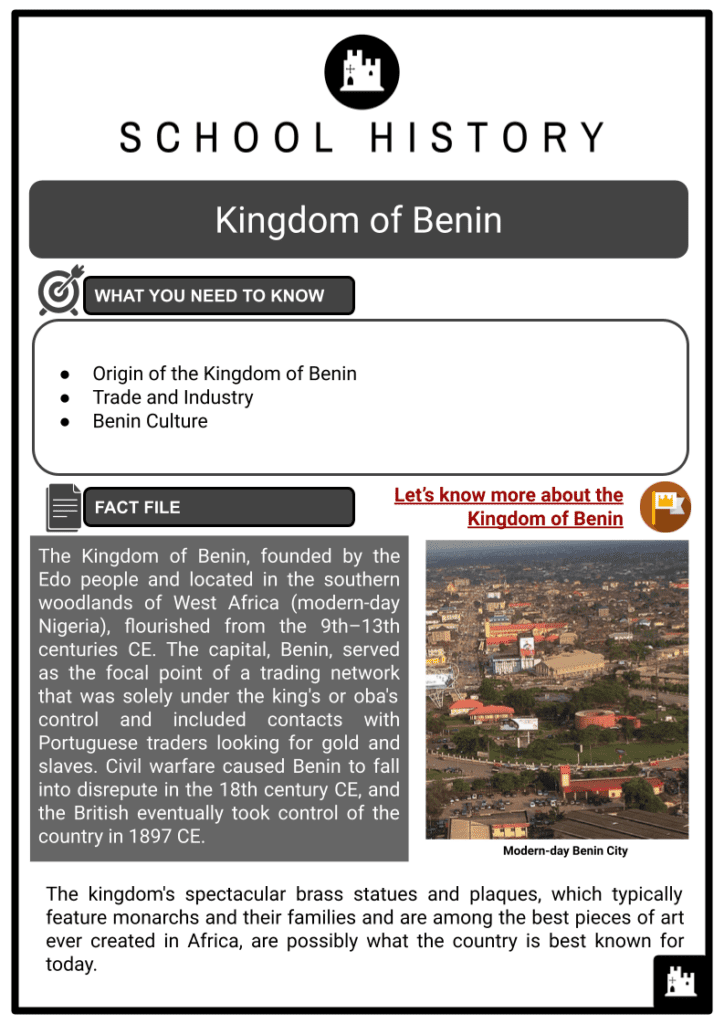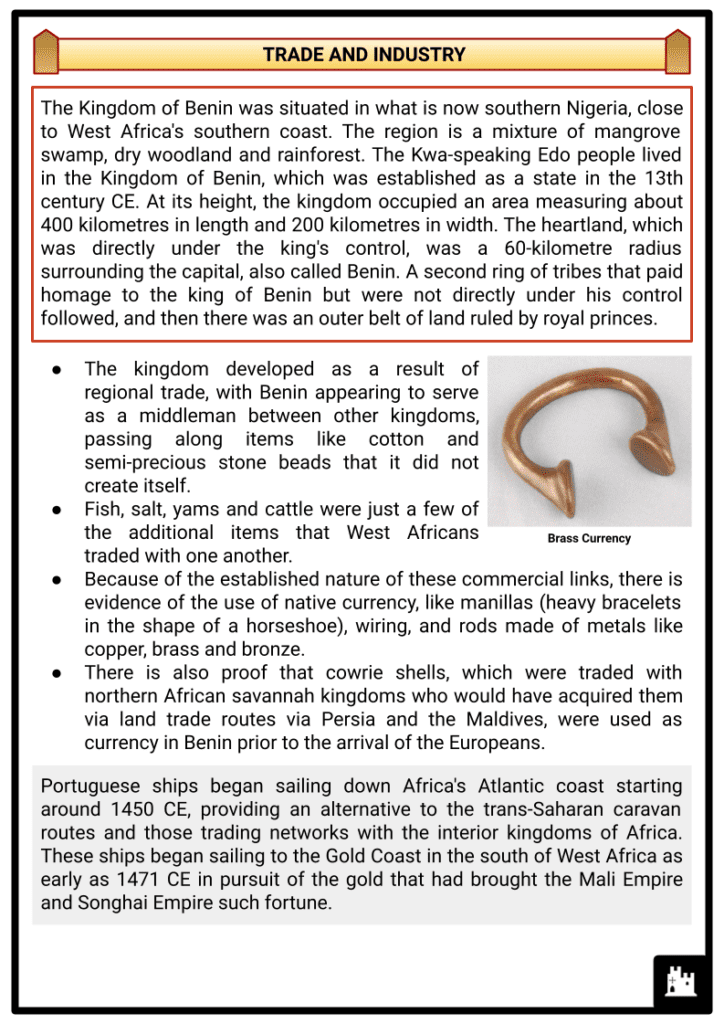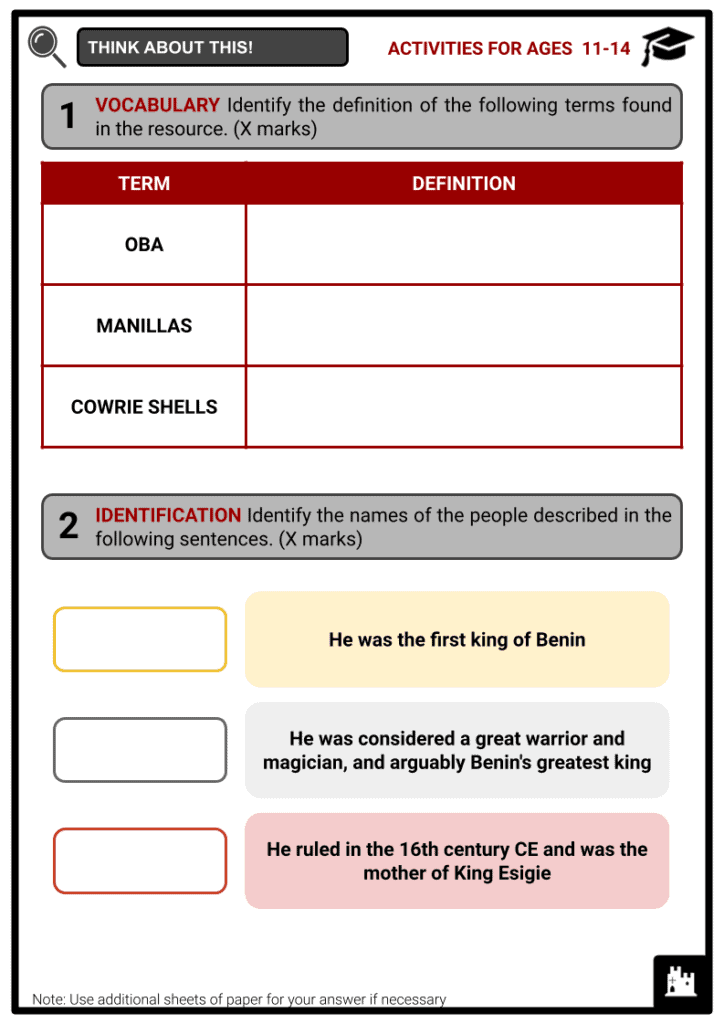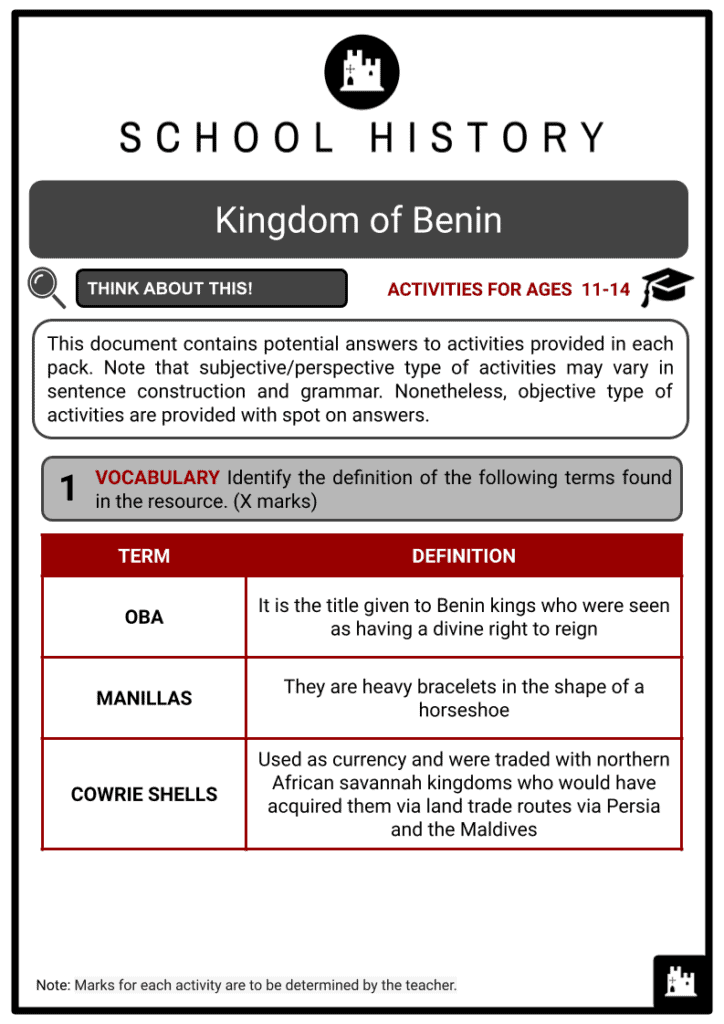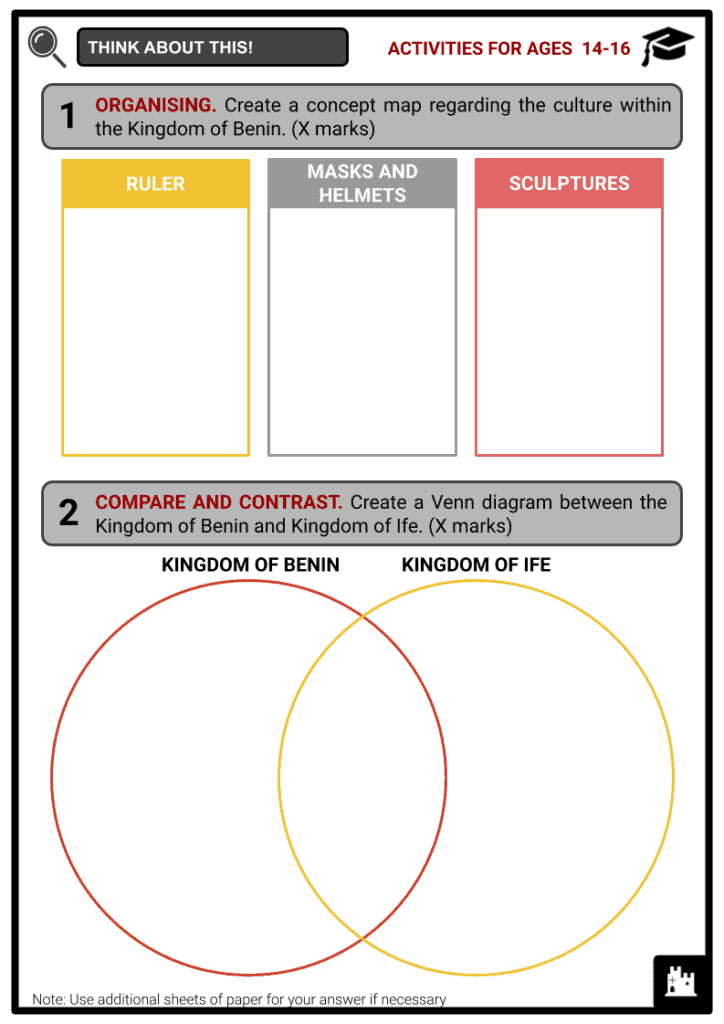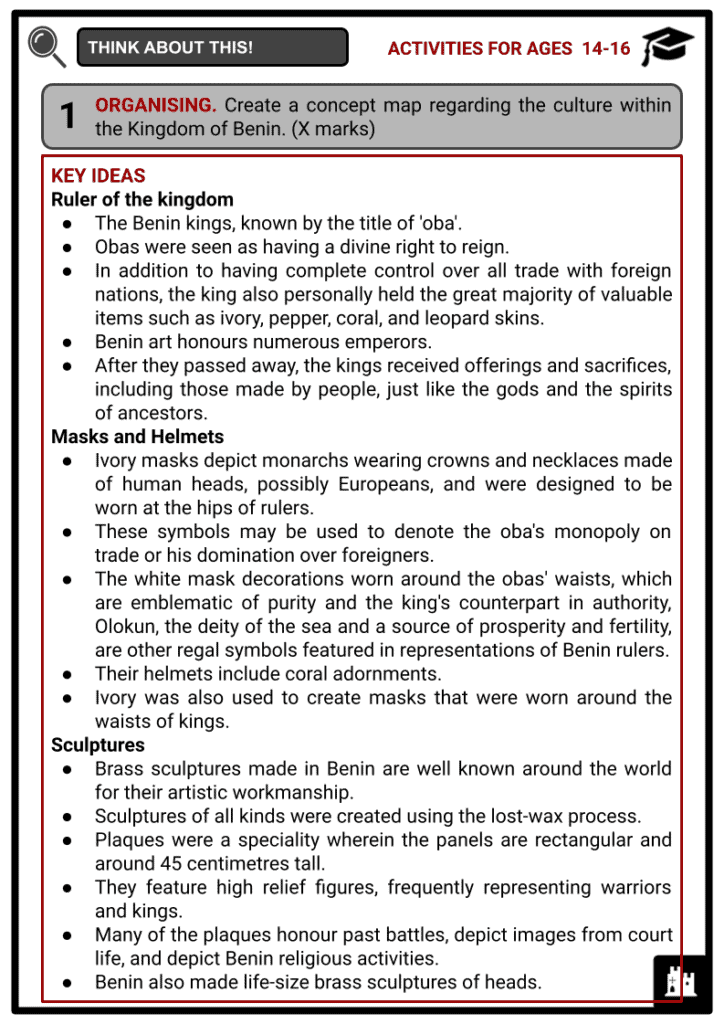Kingdom of Benin Worksheets
Do you want to save dozens of hours in time? Get your evenings and weekends back? Be able to teach about the Kingdom of Benin to your students?
Our worksheet bundle includes a fact file and printable worksheets and student activities. Perfect for both the classroom and homeschooling!
Summary
- Origin of the Kingdom of Benin
- Trade and Industry
- Benin Culture
Key Facts And Information
Let’s find out more about the Kingdom of Benin!
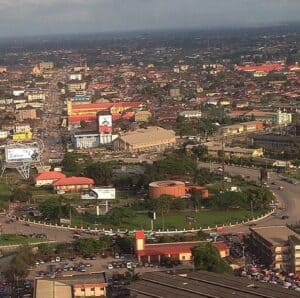
The Kingdom of Benin, founded by the Edo people and located in the southern woodlands of West Africa (modern-day Nigeria), flourished from the 9th–13th centuries CE. The capital, Benin, served as the focal point of a trading network that was solely under the king's or oba's control and included contacts with Portuguese traders looking for gold and slaves. Civil warfare caused Benin to fall into disrepute in the 18th century CE, and the British eventually took control of the country in 1897 CE. The kingdom's spectacular brass statues and plaques, which typically feature monarchs and their families and are among the best pieces of art ever created in Africa, are possibly what the country is best known for today.
ORIGIN OF THE KINGDOM OF BENIN
- At least as early as the 9th century CE, iron-working technology was brought to the southern part of West Africa, or it developed independently. Crop yields increased due to improved agricultural equipment. People in the southern region of West Africa's rain- and dry-forest belt cleared land for their settlements and prospered by growing crops like yams, bananas, and oil palm kernels.
- Like the Kingdom of Benin, the Kingdom of Ife was situated in modern-day Nigeria and thrived during the 11th and 15th centuries CE.
- The kingdom created a large number of fine-cast bronze sculptures, particularly expressive human head sculptures.
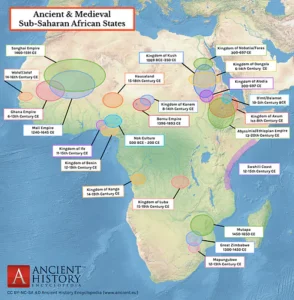
Map of Ancient African States - Perhaps the earlier Nok Culture and Igbo-Ukwu had an influence on life.
- The monarch of Ife is said to have dispatched a master artisan to Benin in the late 13th century CE to spread his knowledge of sculpture.
- This may be a reference to the historical movement of iron-working Yoruba peoples in the Edo region of Benin.
- The Edo story also claims that Prince Oranmiyan of Ife was invited to rule them and that it was his son, Eweka, who succeeded him as the first king of Benin.
- The use of a leopard in relation to death and snakes, like those that entwine the gables of the Benin palace, and an Ife sculpture, are examples of similarities between the two cultures' artistic expressions. However, archaeology has not yet been able to conclusively link these states, which consecutively controlled the southern region of West Africa above the Bight of Benin.
TRADE AND INDUSTRY
- The Kingdom of Benin was situated in what is now southern Nigeria, close to West Africa's southern coast. The region is a mixture of mangrove swamp, dry woodland and rainforest. The Kwa-speaking Edo people lived in the Kingdom of Benin, which was established as a state in the 13th century CE. At its height, the kingdom occupied an area measuring about 400 kilometres in length and 200 kilometres in width. The heartland, which was directly under the king's control, was a 60-kilometre radius surrounding the capital, also called Benin. A second ring of tribes that paid homage to the king of Benin but were not directly under his control followed, and then there was an outer belt of land ruled by royal princes.
- The kingdom developed as a result of regional trade, with Benin appearing to serve as a middleman between other kingdoms, passing along items like cotton and semi-precious stone beads that it did not create itself.
- Fish, salt, yams and cattle were just a few of the additional items that West Africans traded with one another.
- Because of the established nature of these commercial links, there is evidence of the use of native currency, like manillas (heavy bracelets in the shape of a horseshoe), wiring, and rods made of metals like copper, brass and bronze.
- There is also proof that cowrie shells, which were traded with northern African savannah kingdoms who would have acquired them via land trade routes via Persia and the Maldives, were used as currency in Benin prior to the arrival of the Europeans.
- Portuguese ships began sailing down Africa's Atlantic coast starting around 1450 CE, providing an alternative to the trans-Saharan caravan routes and those trading networks with the interior kingdoms of Africa. These ships began sailing to the Gold Coast in the south of West Africa as early as 1471 CE in pursuit of the gold that had brought the Mali Empire and Songhai Empire such fortune.
- The southern peoples of West Africa, who had previously been at the very end of a trade chain that originated in Europe and proceeded through North Africa, the Sahara and the West African savannah, suddenly found themselves at the other end of a thriving maritime trade as ships arrived directly from Europe. Despite not being a coastal state, Benin kept in touch with its neighbours via the port of Ughoton on the Benin River.
- Benin traded with the Portuguese after they colonised Sao Tome and Principe in the 15th century. The Portuguese had a 30-year presence in Ughoton starting in 1487 CE.
- The Europeans were interested in trading slaves, ivory, cotton textiles, and beads with other West African peoples in exchange for the commodities they valued most: gold and pepper (the only two goods in demand in Europe).
- The fine Indian cotton textiles, glass beads and cowrie shells that the Portuguese brought to Africa were also sought after by West African tribes.
- Due to the necessity for copper and lead bronze to produce the brass for their renowned sculptures, Benin must have also had an insatiable desire for these materials.
- The trade of Benin was strictly regulated by the king, who established a monopoly.
- The fact that the monarch forbade the selling of male slaves after 1516 CE because he required them for his own army suggests that he had a strong negotiating position with the Europeans.
- The king of Benin established diplomatic ties with the Portuguese government in 1514 CE by sending a mission to Europe, presumably to negotiate the delivery of a supply of weapons to his realm. Instead of sending weapons to a prospective foe, the Portuguese sent a number of Christian missionaries to seek to convert the ruler and his subjects to Christianity, as had been done elsewhere in Africa. The project to spread Christianity was largely abandoned for what it was, a flimsy veil of decency to conceal the Portuguese policy of stripping the land of all valuables as quickly and inexpensively as possible.
- The king remained faithful to his traditional beliefs, even though some churches were built and some Africans did convert. Moreover, no attempts were made to set up any type of administrative infrastructure, a goal that was already greatly impeded by the high mortality rates of Europeans after they contracted native diseases. Only in the 19th century CE did European missionaries begin to seriously challenge traditional beliefs in West Africa.
BENIN CULTURE
- The Benin kings, known by the title of 'oba', were seen as having a divine right to reign. In addition to having complete control over all trade with foreign nations, the king also personally held the great majority of valuable items such as ivory, pepper, coral, and leopard skins. Benin art honours numerous emperors.
- Ivory masks depict monarchs wearing crowns and necklaces made of human heads, possibly Europeans, and were designed to be worn at the hips of rulers.
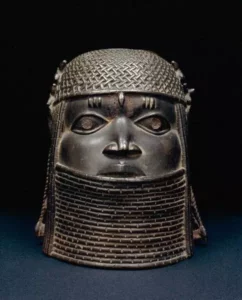
Benin Brass Head - These symbols may be used to denote the oba's monopoly on trade or his domination over foreigners.
- Kings frequently appear as military leaders in the brass plaques that ornamented the palace of Benin.
- They can be recognised by the emblems of their rank, such as necklaces with leopard teeth and scarification marks with leopard spots.
- The leopard was a suitable representation of the oba since it was regarded as the 'Monarch of the Bush' and only the king was allowed to kill one, usually as part of an annual sacrifice for his personal honour.
- The white mask decorations worn around their waists, which are emblematic of purity and the king's counterpart in authority, Olokun, the deity of the sea and a source of prosperity and fertility, are other regal symbols featured in representations of Benin rulers. Their helmets include coral adornments. After they passed away, the kings received offerings and sacrifices, including those made by people, just like the gods and the spirits of ancestors.
- Ewuare the Great (reigned from 1440 to 1473 CE), who was considered a great warrior and magician as well, was arguably Benin's greatest king. He is accused of killing his brother and establishing the oba's position as an absolute monarch while simultaneously being credited with managing a period of exceptional prosperity and growing the kingdom to its largest area.
- The political structure established by Ewuare would stand for the remainder of the reign of the Kingdom of Benin. A group of titled and hereditary chiefs and another group of chiefs that the monarch selected to administer particular towns served as the king's advisers. Ewuare also established the custom of a king's eldest son inheriting the throne from his father.
- The kingdom's capital, Benin, is located 30 kilometres inland and to the west of the Niger River. The city was formerly encircled by towering earthworks, but as there are many holes, it is believed that these were not built for defensive purposes. The walls may have helped to separate various kin groupings within the capital, each with their own surrounding farms and all loyal to the king. For guild-affiliated artisans, the city would have been further divided into districts.
- The political and spiritual centre of the Kingdom of Benin was the king, his court and the palace. The palace included numerous courtyards and galleries that were supported by wooden pillars. Brass plaques, which are regarded as one of the pinnacles of West African art from any era, were attached to these pillars.
- Brass sculptures made in Benin are well known around the world for their artistic workmanship. When the Portuguese arrived at the end of the 15th century CE and brought massive amounts of brass for trade, production immediately took off. From this time, sculptures of all kinds were created using the lost-wax process, but plaques were a particular speciality. These panels are rectangular and around 45cm tall. They feature high relief figures, frequently representing warriors and kings. Many of the plaques, which were formerly fastened to wooden pillars in the Benin royal palace, honour past battles, depict images from court life, and depict Benin religious activities.
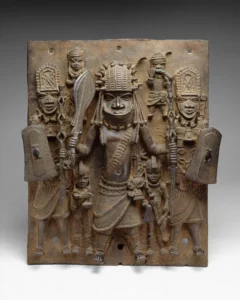
Plaque of Warriors - In addition to plaques, Benin artists also created ceremonial bells, miniature but complete human and animal figures, and life-size brass sculptures of heads. Benin artisans also favoured ivory, which they carved into the described hip masks as well as incredibly elaborate and detailed boxes, combs and armlets. As already noted, ivory was used to create masks that were worn around the waists of kings. A wonderful pair still exists, and may be found in the British Museum in London and the Metropolitan Museum in New York. Both masks might represent Idia, who ruled in the 16th century CE and was the mother of King Esigie.
- It's also likely that many Benin sculptors used wood, but because of the effects of climate change and insects, wood rarely lasts very long in Africa. Benin's artists were not afraid to create pieces expressly for the Portuguese market, crafting items like ivory salt cellars with European horse riders or casting brass soldiers holding muskets with a distinctively African twist.
- By the late 16th century CE, the British, French and Dutch joined the Portuguese in developing an interest in West Africa. In 1897 CE, Britain overthrew the kingdom, which had already been seriously weakened by a prolonged sequence of succession disputes and civil wars, in an effort to lessen the control the Benin kings had over trade. The monarchs were not fully replaced, though, and today's Benin's royal family descendants continue to maintain the title of oba and serve as advisers to the Nigerian government. The French colony of Dahomey, which became the Republic of Benin in 1975 CE, restored the name Benin, preserving it in the process.
Image Sources
- https://en.wikipedia.org/wiki/Benin_City#/media/File:Areal_view_of_the_ancient_city_of_Benin.jpg
- https://www.worldhistory.org/img/r/p/500x600/10453.jpg.webp?v=1661886362
- https://www.worldhistory.org/img/r/p/500x600/10344.jpg.webp?v=1636409703
- https://www.worldhistory.org/img/r/p/500x600/10346.jpg.webp?v=1662544503

